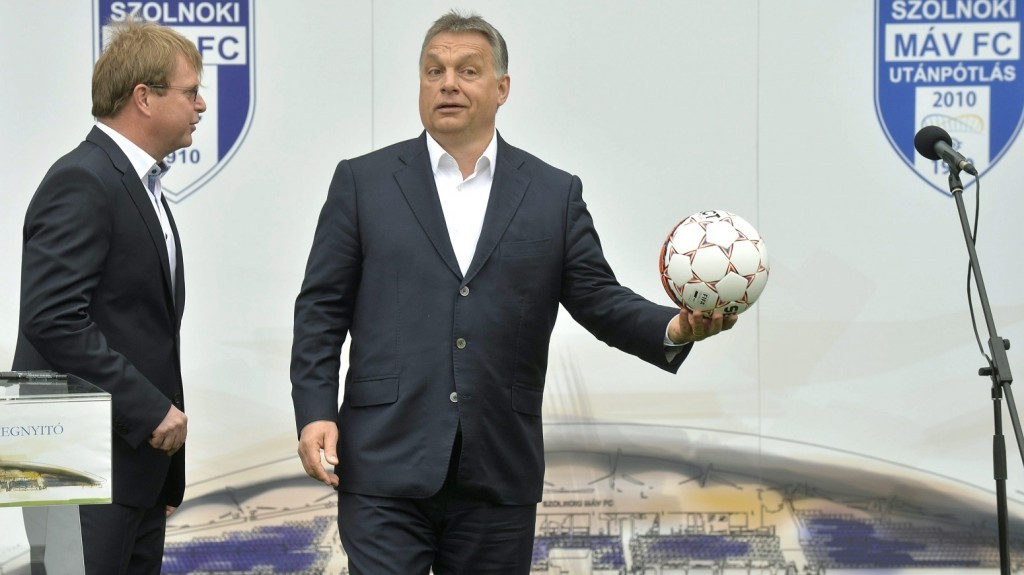The https://english.atlatszo.hu use cookies to track and profile customers such as action tags and pixel tracking on our website to assist our marketing. On our website we use technical, analytical, marketing and preference cookies. These are necessary for our site to work properly and to give us inforamation about how our site is used. See Cookies Policy
Premier’s hobby costs the taxpayers a fortune
If all goes as planned, 32 new football stadiums will be built in Hungary by 2020, in no small part due to the premier’s personal fascination with the sport. The effort is questioned by many in the country who say that the astronomical funding of nearly €700 million is a total waste, not to mention the fact that significant sums have already been paid for stadiums where a single brick has to be laid.
It is no surprise that Prime Minister Viktor Orban is a devout football fan and is consequently determined to elevate the nation’s teams to the elite ranks of the sport, where it was until the mid-1980s. Even though football is the most popular sport in Hungary, this hasn’t shown in the results of the past years. The national team finally managed to end the dry spell and managed to qualify for the 2016 European Championship after a 30 year-absence from international competition, but clubs haven’t had much luck in international leagues.

Part of the drive is the overhaul or complete reconstruction of a number of football stadiums. The state is spending heavily on the new projects and it’s clear that the goals of the entire effort are vague to say at best, meaning there isn’t even a will to recoup a large part of the money spent, a story Atlatszo.hu has already covered.
A review of the overall plan shows that 32 new facilities will be completed by 2020 for a cost of HUF 215.8 billion (€686 million) in state spending, covering 98.5% of the aggregate tab, not to mention the fact that large chunks of the total have already been paid out for various design and consultancy jobs even though the actual work on the stadiums in question hasn’t even started.
Many opposed to Orban and seeing the low quality the sports can produce are heavily critical of the entire drive citing areas like the education or healthcare sectors where the money could better be utilized. It is a common conversational item to cite the wave of new stadiums that are being inaugurated every day from state money as a symbol of waste and poor governance. It is clearly a hot topic, which is why perceptions are somewhat skewed. As we found, so far only seven facilities have been completed, there are several delays and also funding issues. The one thing that is very similar to the stories we cover is the marked presence of the companies that are the usual beneficiaries of the Fidesz party’s rule.
Politics also seems to play a role in the venue selection. Out of the seven facilities completed, almost all are in towns with a Fidesz leadership, or homes to clubs under the supervision of people closely linked to the governing party. On the other hand there seems to be no link between a given club’s qualities and whether they are getting a new stadium. The country’s most popular club FTC got a new stadium and so did Gyirmot, a team for a district of northwest Hungary’s Gyor in the second-league, which most football fans probably couldn’t even place on a map.
The other aspect that is a constant annoyance to the opponents of the stadium-building drive is that the shiny new stadiums usually only accommodate a handful of spectators, since viewer interest for domestic games is abysmally low. In most of the new facilities a half-packed house would be reason to celebrate.

